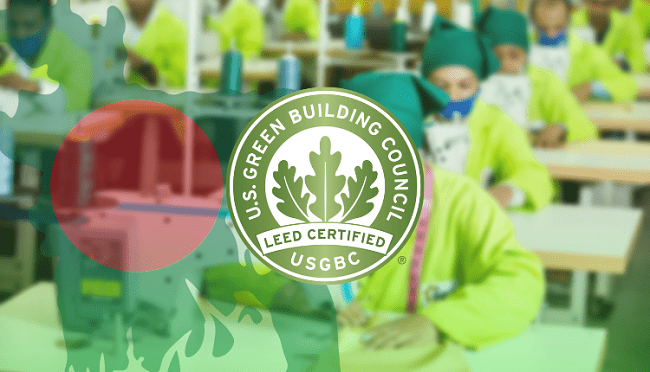According to a recent report, Bangladesh’s garment industry has touched a new milestone of 200 green factories. Moreover, 500 factories are awaiting to receive USGBC certification. This is really a significant achievement for Bangladesh’s garment industry in its journey towards sustainable industrialization. It also proves the commitment of Bangladesh’s apparel industry towards sustainability. Despite the strides made, an alarming issue persists: Bangladesh is grappling with obtaining fair prices for its products from international buyers.
These green factories along with other complaint factories adopt eco-friendly technologies, focus on reducing energy consumption, minimizing waste, and maintaining higher standards of worker safety and well-being. Bangladesh’s garment manufacturers have invested and are continuing to invest a huge amount to build green factories.

Figure: Is the milestone of 200 green factories benefiting manufacturers to secure fair prices? Courtesy: Collected.
But the challenges in achieving fair prices from buyers make business tougher for manufacturers. According to a recent report published by International Trade Centre (ITC) titled ‘The Garment Costing Guide for Small Firms in Value Chains’ claims that Bangladesh’s FoB prices are lower than even Pakistan and Cambodia.
Also, the prices of Bangladesh’s RMG makers get far below the global average rate. While Vietnam, Indonesia, Turkey and Mexico like apparel manufacturing countries are always getting paid above the global average.
Another latest report published by World Trade Organization shows that Bangladesh gets lower prices compared to its competitor countries like Vietnam, Cambodia, India, Turkey, etc. from its two largest apparel exporting destinations – the United States and European Union (EU) countries.
International buyers are consistently paying lower than the global average price to apparel suppliers in Bangladesh. There are some reasons behind the problem. The opacity of pricing structures within the fashion supply chain is a significant hurdle.
Often, buyers negotiate prices based on their own projections, leaving manufacturers with little room for negotiation. This lack of transparency makes it difficult for factories to understand the fair value of their products.
Moreover, the power dynamic between buyers and manufacturers further exacerbates the issue. Buyers, who hold the upper hand due to their global reach and access to multiple suppliers, can dictate terms, leaving manufacturers with limited bargaining power.
Long-term contracts and agreements between manufacturers and buyers may lock factories into unfavorable terms, making it difficult to renegotiate prices even if costs or market conditions change. Some green garment factories subcontract work to smaller, less sustainable factories due to production demands.
These subcontractors may offer lower prices, but they might not adhere to the same sustainability standards, ultimately affecting the overall value of the products.
Bangladesh has been historically associated with lower-cost production, which also impacts the perceived value of its products. Even as green factories seek to differentiate themselves, overcoming this stereotype and justifying higher prices remains a challenge.
In fine, the journey of Bangladesh’s green garment factories towards sustainability and ethical production practices is both commendable and vital for the industry’s future.
However, the inability to secure fair prices from international buyers poses a significant threat to the viability of these efforts. More equitable partnerships between buyers and manufacturers, enhancing transparency in pricing, and fostering a deeper understanding of the value proposition presented by green garment factories can be some effective solutions. Regulatory interventions, such as international guidelines for fair pricing, could also play a role in leveling the playing field.
















